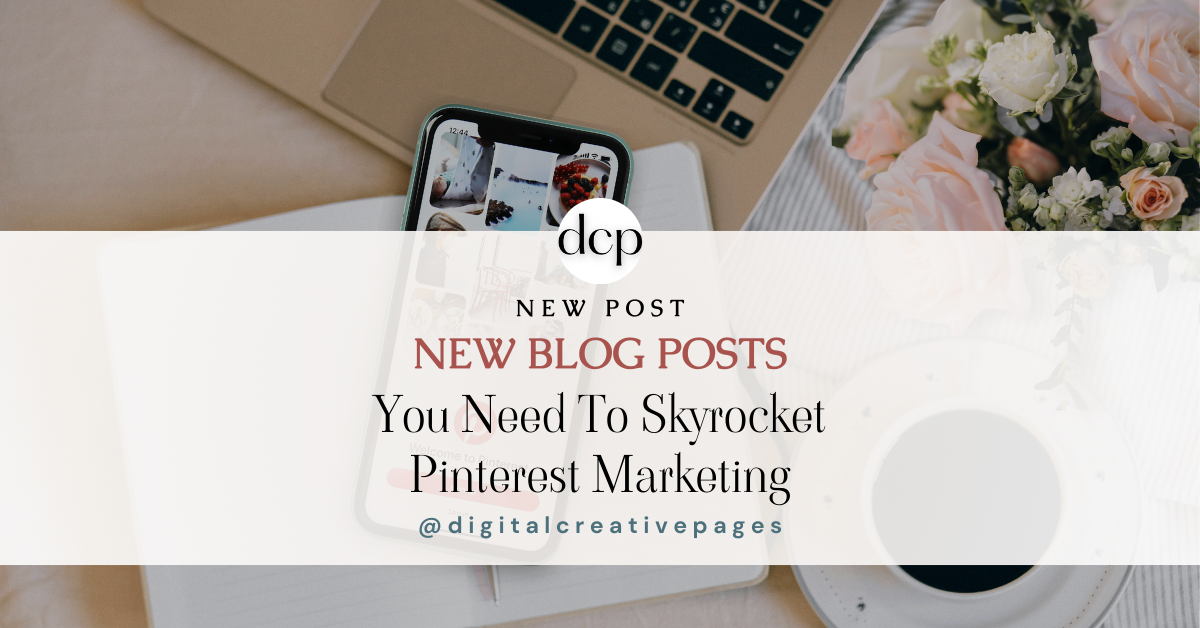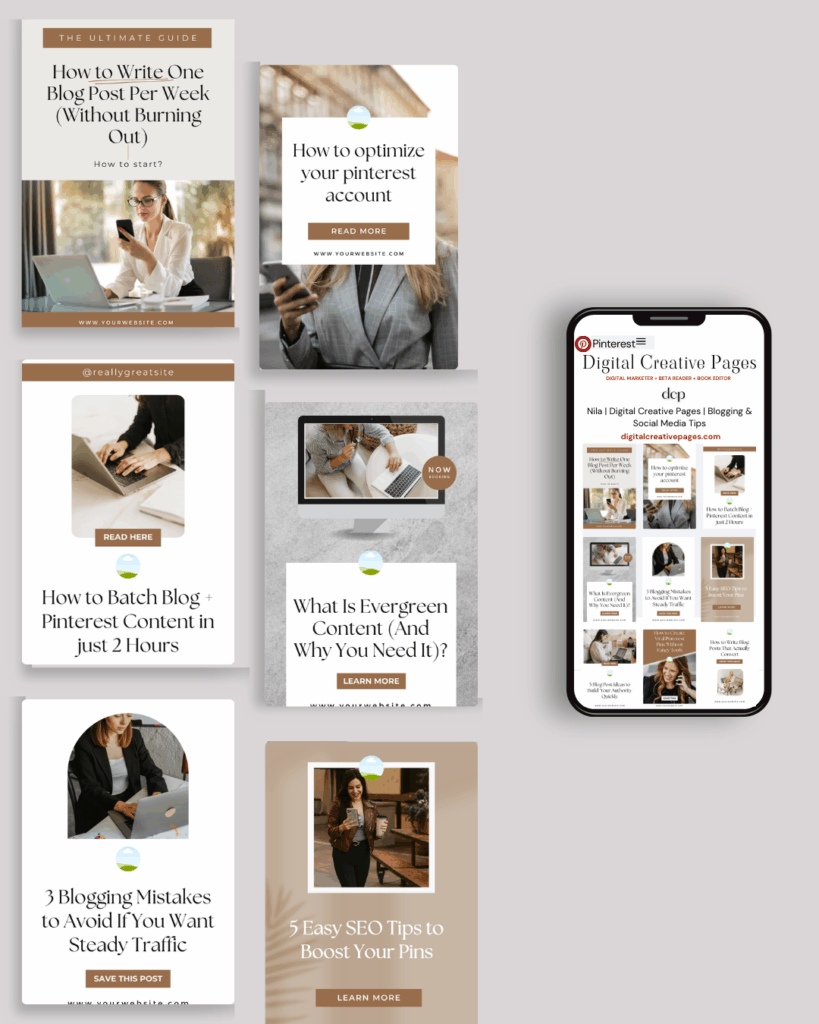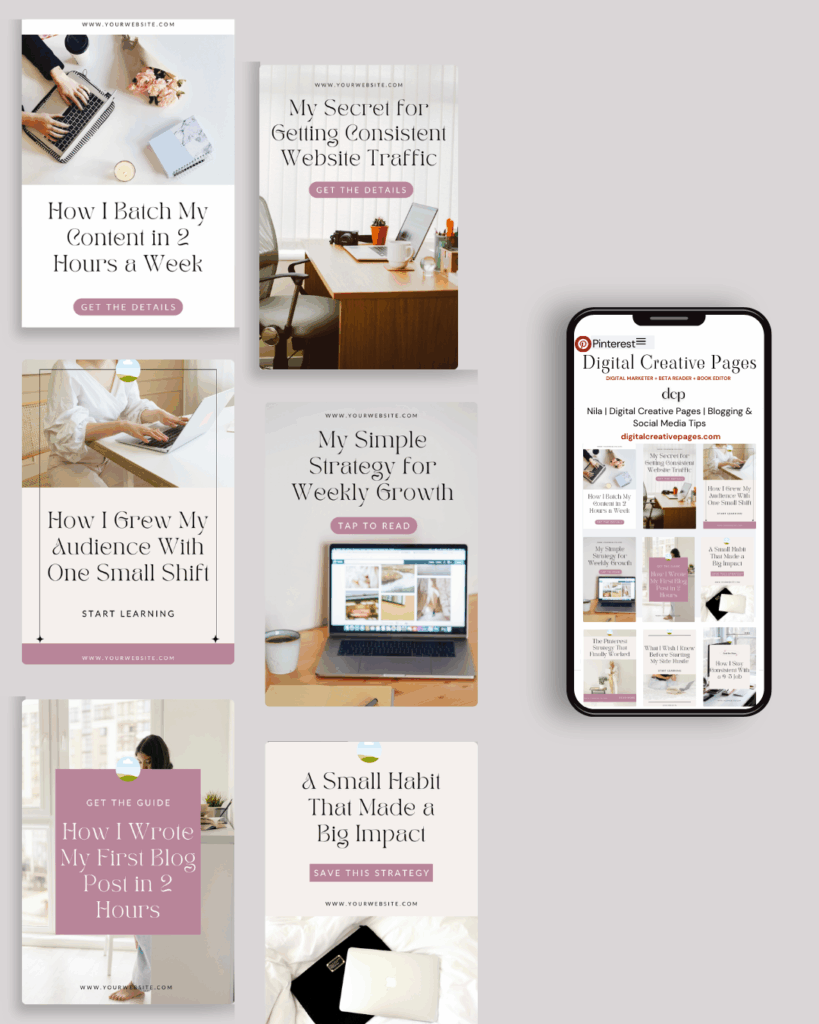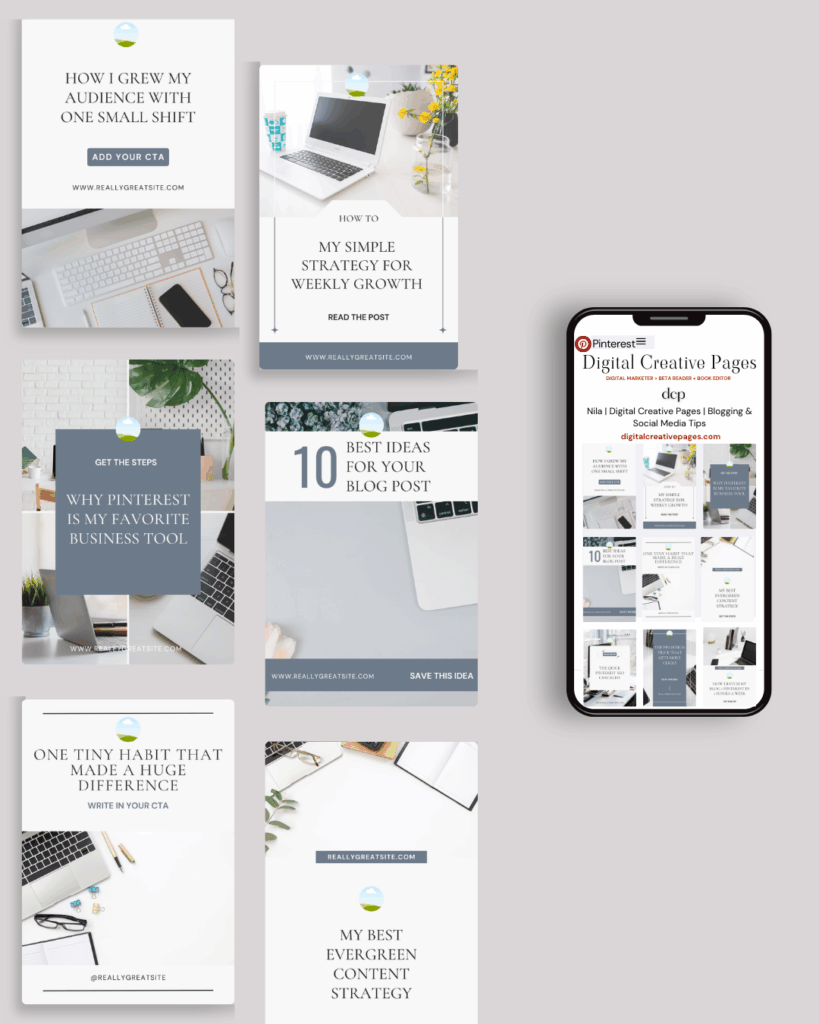Browse around
topics
Hey Girl!
business mentor + beta reader + book editor
I'm Nila
I'm a beta reader, editor, and behind-the-scenes support for authors and entrepreneurs.
I help women turn their skills into income by building sustainable online businesses with digital products and smart content strategy—so they can work from anywhere, on their terms.
Customize Your Showit Template To Get Results
showit
15 Small Business Ideas To make You Rich
Entrepreneurship
Pro Beta-Reading Services For Your Manuscript
Books
Pinterest – Perfect Virtual Assistant For Your Blog
social media
Author Templates
Make showing up online easier with this ready-to-use set of author templates. Whether you’re announcing a cover reveal, celebrating your first reviews, or simply wanting to connect with readers, these designs save you time while still looking polished.
Canva template
My bestsellers
Pinterest Playbook
Imagine driving massive traffic to your website every day with Pinterest!
A comprehensive roadmap to mastering Pinterest marketing and growing your online presence effortlessly!
How To Start A Successful Blog to Make Money
blogging
Mindfulness Practices To Decrease Anxiety
mindfulness
Stock pics
Styled Stock Society
Stock photos and brand visuals for women entrepreneurs who are ready to stand out.
Styled Stock Society — with its on-brand and one-of-a-kind stock photos, graphic templates, marketing materials, and more — is designed to elevate your brand in less time.
#affiliatelink
Introduction
When you’re starting out with Pinterest marketing, one of the biggest questions that pops up is: “How many new blog posts do I actually need?” The answer isn’t as cut-and-dry as you might think because it depends on your niche, goals, and how much content you’re ready to commit to producing. However, let’s break it down step by step to give you a clear strategy that works no matter where you’re starting from.
Pin this for later
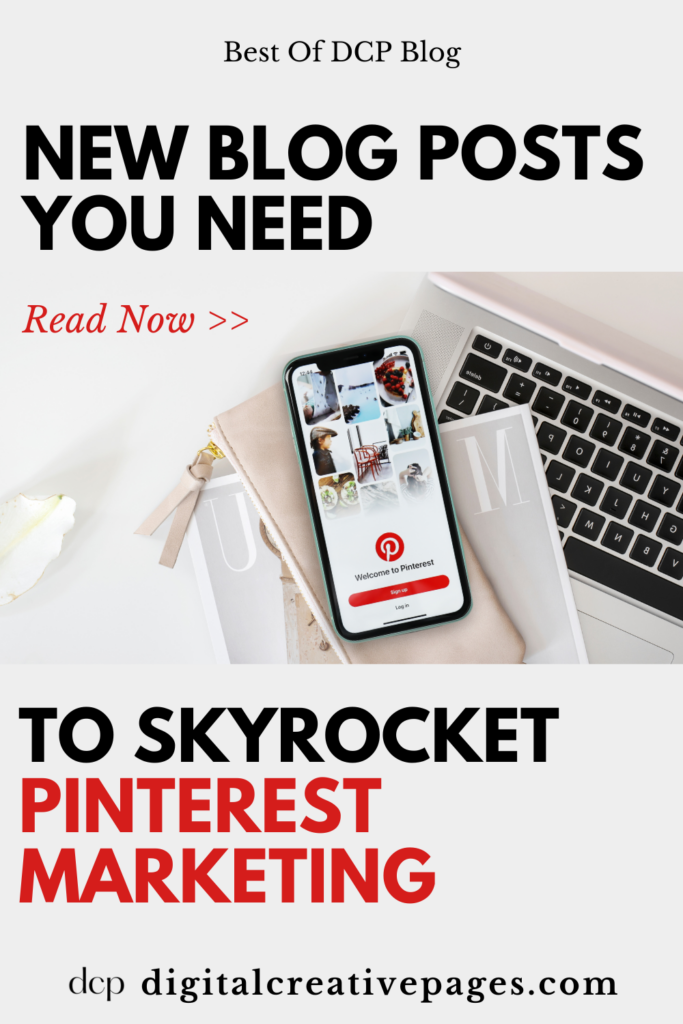
Why Blog Posts Are Essential for Pinterest Marketing
Pinterest isn’t just a social media platform; it’s a search engine where people go to find inspiration and solve problems. Think of it as Google with a visual twist. When users search for something on Pinterest, they’re typically looking for actionable ideas, tips, or solutions—and your blog posts serve as the answers they’re craving.
Blog posts give you a destination to send all that Pinterest traffic. Instead of users just saving a pretty pin, they’ll click through to your site, explore your content, and ideally take the next step, whether that’s signing up for your email list, purchasing a product, or consuming more of your content.
The Minimum Number of Blog Posts to Get Started
You don’t need a massive library of content to begin Pinterest marketing effectively. While you might see established accounts with hundreds of blog posts and pins, you can absolutely start small. A good starting point is 5-10 high-quality blog posts.
Here’s why:
- Pinterest thrives on quality, not quantity. A handful of valuable, detailed posts can outperform dozens of shallow ones.
- You’ll have enough variety to create multiple pins per post. Even with just five posts, you can create 20-30 pins to start filling your Pinterest boards.
- Starting small lets you test and refine. Instead of feeling overwhelmed by producing tons of content, focus on what resonates with your audience and adjust as you go.
Want easy, practical content tips to grow your business? Join my weekly email list for Canva tricks, new social media updates, and simple strategies that actually work.
What Types of Blog Posts Work Best?
Not all blog posts are created equal when it comes to Pinterest. You’ll want to focus on evergreen content that provides real value.
Here are some blog post formats that perform well on Pinterest:
- “How-to” posts (e.g., “How to Organize Your Home on a Budget”)
- Listicles (e.g., “10 Easy Recipes for Busy Weeknights”)
- Ultimate guides (e.g., “The Beginner’s Guide to Decluttering Your Closet”)
- Problem-solving posts (e.g., “Struggling to Sleep? Here’s What You Can Do”)
- Inspiration and ideas (e.g., “20 Gorgeous DIY Wedding Decorations”)
How to Make Your Blog Posts Pinterest-Friendly
Once you’ve decided on your first 5-10 blog post topics, it’s crucial to make sure they’re optimized for Pinterest users.
Here’s how to do that:
- Write detailed and valuable content. Pinterest users love in-depth posts that solve problems or inspire creativity. Aim for at least 1,000 words per post.
- Include plenty of visuals. Use high-quality images, infographics, or step-by-step photos to break up text and keep readers engaged.
- Add Pinterest-worthy images. Create vertical, eye-catching pins for each post using tools like Canva.
- Use keyword-rich titles and descriptions. Research long-tail keywords that your audience is searching for on Pinterest and weave them naturally into your blog post titles and meta descriptions.
- Add a call-to-action. Encourage readers to save your pin for later, comment, or share.
PRO TIP: Batch Create Content for Efficiency
Instead of writing one blog post at a time, batch-create your first 5-10 posts. Outline them all in one session, write them over a week, and then optimize them for Pinterest. This way, you can hit the ground running with a solid content foundation.
PIN TEMPLATE CLUB
Creating consistent Pinterest graphics shouldn’t eat up your entire afternoon. That’s why I created the Pinterest Template Membership, where 15 trending, ready-to-customize templates are delivered to your inbox every month for just $9.
No more design paralysis. No more wondering what’s working on Pinterest right now. I research the trends, you get the templates.
Join the membership for $9/month → HERE
🎁 Want 5 Free Pinterest Templates?
Not sure if templates are for you? Grab 5 of my trending Pinterest designs (fully editable in Canva) and test them out. Completely free.
How Many Pinterest Boards Do You Need for Your Blog Posts?
Once you have your blog posts ready, the next step is setting up Pinterest boards. Pinterest boards act like categories or folders that organize your pins, making it easy for users to discover content in specific niches.
The Ideal Number of Pinterest Boards to Start With
A good starting point is 5-10 boards. Each board should focus on a specific topic or subtopic within your niche. The idea is to keep your boards relevant and aligned with your blog content so that you can pin directly to them without confusing your audience.
Here’s how it works:
- If you have five blog posts about “healthy recipes,” you might create boards like “Quick Healthy Dinners,” “Meal Prep Ideas,” and “Easy Smoothie Recipes.”
- Each board gives you multiple opportunities to share your content while staying organized and relevant.
How to Choose Topics for Your Pinterest Boards
Think about the main themes or topics your audience cares about. Each board should represent a category that your blog posts fit into. To make it even more effective, use Pinterest’s search bar to find popular keywords related to your niche.
For example, if your blog focuses on home organization, your boards could include:
- “Decluttering Tips”
- “Storage Solutions for Small Spaces”
- “DIY Closet Organization”
- “Minimalist Living Ideas”
- “Room-by-Room Organizing Guides”
How Many Pins Per Board?
When you’re starting out, aim to have at least 20-30 pins per board. This gives each board enough content to appear established and helps Pinterest understand what your board is about.
Here’s the breakdown:
- Use pins from your own blog posts to populate each board.
- Supplement with high-quality pins from other creators to round out your boards and improve engagement.
- Pin consistently—Pinterest rewards active accounts, so try to pin daily or use a scheduling tool like Tailwind.
PRO TIP: Optimize Your Boards for SEO
Just like your blog posts, your Pinterest boards need to be optimized with keywords. When creating a board, use these tips:
- Board name: Use clear, keyword-rich titles (e.g., “Easy Weeknight Dinners” instead of “Yummy Recipes”).
- Board description: Write a detailed description that includes long-tail keywords naturally.
- Categorize correctly: Choose the most relevant category for your board to help Pinterest classify your content.
Need Pinterest keywords that actually work?
Stop guessing. I’ll research 30 SEO keywords for your niche – the words/phrases people are searching for on Pinterest right now.
You fill out a quick form (niche, content type, blog posts), I do the research, and you get a keyword list in 7 days. Use them in your pins, titles, and descriptions.
$27. Simple.
Request your keywords → HERE
Pulling It All Together: A Beginner’s Pinterest Marketing Plan
Here’s a quick recap of how to get started:
1. Create 5-10 Blog Posts
- Focus on evergreen, valuable content.
- Optimize posts with visuals and keywords.
2. Set Up 5-10 Pinterest Boards
- Choose topics that align with your blog content.
- Populate boards with 20-30 pins each (your content + curated pins).
3. Be Consistent
- Create multiple pins for each blog post to test what works.
- Pin regularly to keep your account active and growing.
Here Is an Example Pinning Strategy for 5-10 Blog Posts
To help you make the most of your 5-10 blog posts, having a clear pinning strategy is essential. Pinterest rewards consistency and variety, so your goal is to regularly share fresh pins to different boards while testing what resonates with your audience. This ensures your pins reach a wider audience and increases the chances of clicks back to your website.
Step 1: Create Multiple Pins for Each Blog Post
Each blog post should have at least 3-5 unique pins. These pins can vary in:
- Design (experiment with colors, fonts, and layouts).
- Headlines (test different titles or hooks).
- Images (use a variety of visuals to appeal to different preferences).
For example, if you have a blog post titled “10 Quick and Healthy Breakfast Ideas,” your pins might include:
- A pin highlighting “5-Minute Breakfasts for Busy Mornings.”
- A pin showcasing “10 Healthy Breakfast Recipes You’ll Love.”
- A pin using a beautiful flat-lay of ingredients.
Step 2: Distribute Pins Across Your Boards
Pin each unique pin to multiple relevant boards over time. This amplifies visibility without overwhelming your audience. Make sure to use keywords in your pin descriptions to optimize for searchability.
For example:
- Pin #1 goes to “Healthy Recipes,” “Quick Meals,” and “Family Breakfast Ideas.”
- Pin #2 goes to “Clean Eating,” “Easy Meal Prep,” and “Morning Routines.”
Step 3: Balance Fresh Pins and Repinning
Pinterest loves fresh content, but you can also repin your older pins to keep them active. Just make sure to spread this out and avoid pinning the same pin to the same board repeatedly in a short time frame.
Sample Weekly Pinning Schedule for 5 Blog Posts
Here’s a simple schedule to help you get started:
Monday:
- Pin one new design from Post 1 to Board A (e.g., “Quick Healthy Recipes”).
- Pin one new design from Post 2 to Board B (e.g., “Family Meal Ideas”).
- Repin one older pin from Post 1 to Board C.
Tuesday:
- Pin one new design from Post 3 to Board A.
- Pin one new design from Post 4 to Board B.
- Repin one older pin from Post 2 to Board D.
Wednesday:
- Pin one new design from Post 5 to Board A.
- Repin one older pin from Post 3 to Board C.
- Pin one curated (non-original) pin from a relevant account to Board E.
Thursday:
- Pin one new design from Post 1 to Board B.
- Repin one older pin from Post 4 to Board A.
- Pin one curated pin from a different creator to Board D.
Friday:
- Pin one new design from Post 2 to Board A.
- Repin one older pin from Post 5 to Board E.
- Create and pin one new pin design for any blog post.
Saturday:
- Pin one curated pin from a relevant creator to Board C.
- Repin one older pin from Post 1 to Board D.
- Pin one new design from Post 3 to Board A.
Sunday:
- Repin an older pin from Post 2 to Board B.
- Pin one curated pin to Board E.
- Evaluate performance: check Pinterest analytics to see which pins and boards are performing best.
PRO TIP: Use a Scheduling Tool
A tool like Tailwind can save you tons of time by automating your pinning schedule. You can preload all your pins for the week, schedule them to go live at optimal times, and analyze results to refine your strategy.
By following this strategy, you’ll ensure that your Pinterest boards stay active, your audience engages with your pins, and your blog traffic steadily grows.
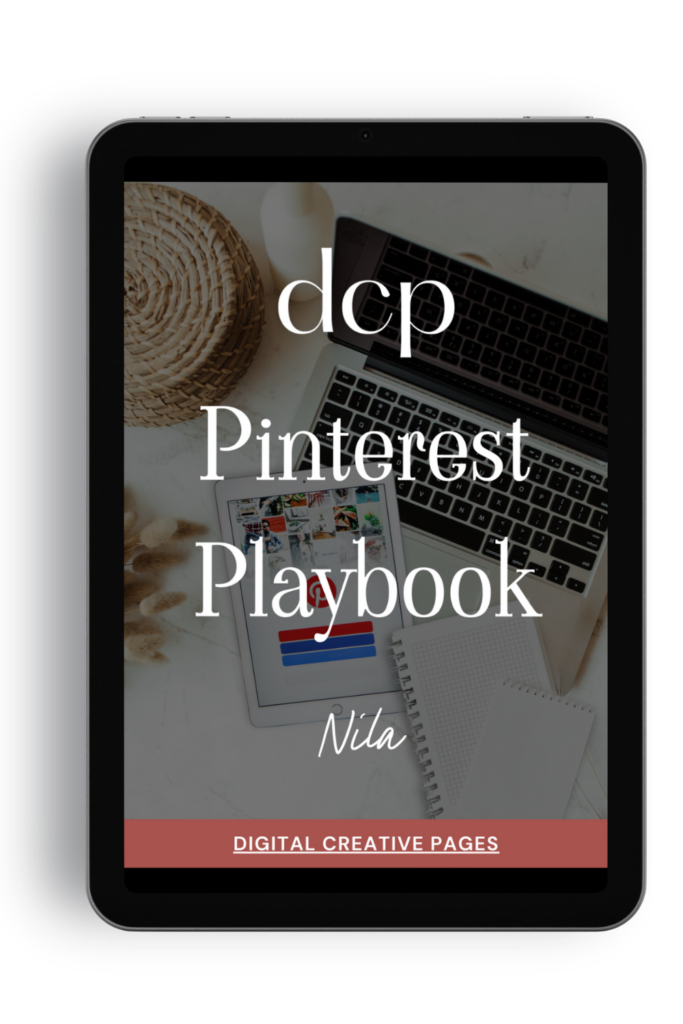
Need a Pinterest strategy that actually works?
The Pinterest Playbook covers everything: how to set up your account, SEO keyword research, algorithm secrets, where to add the keywords, what kind of pins to make.
It’s the complete guide I wish I had when I started. Just 84 pages of what works.
$27 → Get the playbook
How to Maximize Your Pinterest Strategy
Once you’ve set up your blog posts, boards, and pinning schedule, the next step is to take your Pinterest strategy to the next level. This involves refining your approach, leveraging analytics, and incorporating additional tactics to boost your results. Here are actionable tips to maximize your efforts on Pinterest and drive even more traffic to your website.
1. Leverage Pinterest Analytics
Pinterest offers built-in analytics to help you understand what’s working and what isn’t. Regularly reviewing this data allows you to optimize your strategy for better results.
Key metrics to monitor:
- Impressions: How often your pins appear in search results or feeds.
- Saves: The number of users saving your pins to their boards, which extends your reach.
- Clicks: The most important metric—how many users are clicking through to your website.
Action steps:
- Identify your top-performing pins and create similar designs or topics.
- Adjust underperforming pins by reworking headlines, descriptions, or visuals.
- Focus on boards with high engagement to refine your pinning strategy.
2. Join Group Boards and Tailwind Communities
Group boards and Tailwind Communities (formerly called Tailwind Tribes) can significantly boost your reach by connecting you with other pinners in your niche.
- Group boards: Collaborate with like-minded creators to share your pins with a broader audience. Look for boards with active contributors and high engagement. Avoid inactive or spammy boards.
- Tailwind Communities: Join niche-specific communities where members share each other’s content. This creates a win-win situation for amplifying your reach.
Action steps:
- Search for relevant group boards using Pinterest search or websites like PinGroupie.
- Follow group board rules (e.g., pin limits, engagement expectations).
- Actively participate in Tailwind Communities by sharing others’ content to build goodwill and ensure your pins are shared in return.
3. Repurpose Blog Content into Multiple Formats
You don’t need to create entirely new content to keep your Pinterest strategy fresh. Repurpose your existing blog posts into different formats to appeal to various audiences:
- Create infographics summarizing the main points of your posts.
- Design carousel pins (multi-image pins) that tell a story or break down a process step-by-step.
- Use quotes or stats from your posts to design quick, shareable pins.
This not only maximizes the value of your content but also increases the variety of pins you can create for each blog post.
4. Analyze Competitors’ Pinterest Accounts
Your competitors can be a goldmine for understanding what works in your niche. Spend time analyzing their boards, pins, and engagement levels to uncover trends and gaps you can capitalize on.
Focus on:
- What types of content (blog posts, visuals, headlines) resonate with their audience.
- Which of their boards are most active and relevant to your niche.
- The keywords and descriptions they use to rank higher in Pinterest search results.
This insight helps you refine your strategy and tailor it to what’s already working in your industry.
5. Use Pinterest Trends to Stay Relevant
Pinterest’s Trends tool can give you real-time insights into what users are currently searching for in your niche. Use this data to create content that aligns with trending topics or keywords.
Action steps:
- Visit Pinterest Trends and search for your niche keywords.
- Look for seasonal spikes or emerging trends you can incorporate into your content.
- Schedule pins featuring trending topics or products early to catch the wave before it peaks.
6. Repin Seasonally Appropriate Content
Pinterest users often plan months in advance, so incorporating seasonal content into your boards is essential. Whether it’s holiday-themed recipes, back-to-school tips, or summer travel hacks, ensure your boards reflect the seasonality of your niche.
Key timelines:
- Pin holiday content 2-3 months ahead of the event.
- For major seasons like summer or winter, start pinning 6-8 weeks before they begin.
This ensures your pins get indexed early and have time to gain traction.
7. Stay Engaged with Pinterest Daily
Pinterest rewards consistent activity, so staying engaged is vital. This doesn’t mean spending hours on the platform; small daily actions add up over time.
Best practices:
- Pin or repin content daily, even if you’re using scheduling tools.
- Respond to comments or questions on your pins to foster engagement.
- Interact with other users by repinning or commenting on their pins.
By incorporating these strategies, you’ll create a more dynamic, effective Pinterest marketing plan that keeps growing your reach and driving results.
Ready to take your Pinterest strategy to the next level but don’t have the time?
As an experienced Pinterest manager, I help busy entrepreneurs and content creators grow their traffic and sales through strategic Pinterest marketing. From keyword-optimized pin creation to board management and analytics tracking, I handle the technical details so you can focus on your business.
If you’re ready to transform your Pinterest presence without the overwhelm, let’s chat about how my Pinterest Management Services can work for you. Learn more about my services to get started.
Additional Tips
1. Diversify Your Blog Content for Better Reach
Instead of sticking to one content type, ensure your 5-10 blog posts cover a mix of formats to appeal to different Pinterest users:
- Step-by-step tutorials for users seeking how-to guidance.
- Inspirational listicles that are easy to read and save.
- Problem-solving guides addressing specific pain points in your niche.
Having a diverse content base gives you flexibility when designing pins and ensures you cater to a broader audience.
2. Use Evergreen Blog Posts to Start
When you’re starting Pinterest marketing, prioritize evergreen content—posts that remain relevant year-round. These will consistently drive traffic and clicks long after they’re published. Avoid content with short shelf lives unless it’s seasonally strategic.
Examples: “10 Tips for Home Organization,” “Beginner’s Guide to Budgeting,” or “Easy Meal Prep Ideas.”
Grab your copy of 50+ Blog Post Ideas To Supercharge Your Content Strategy today
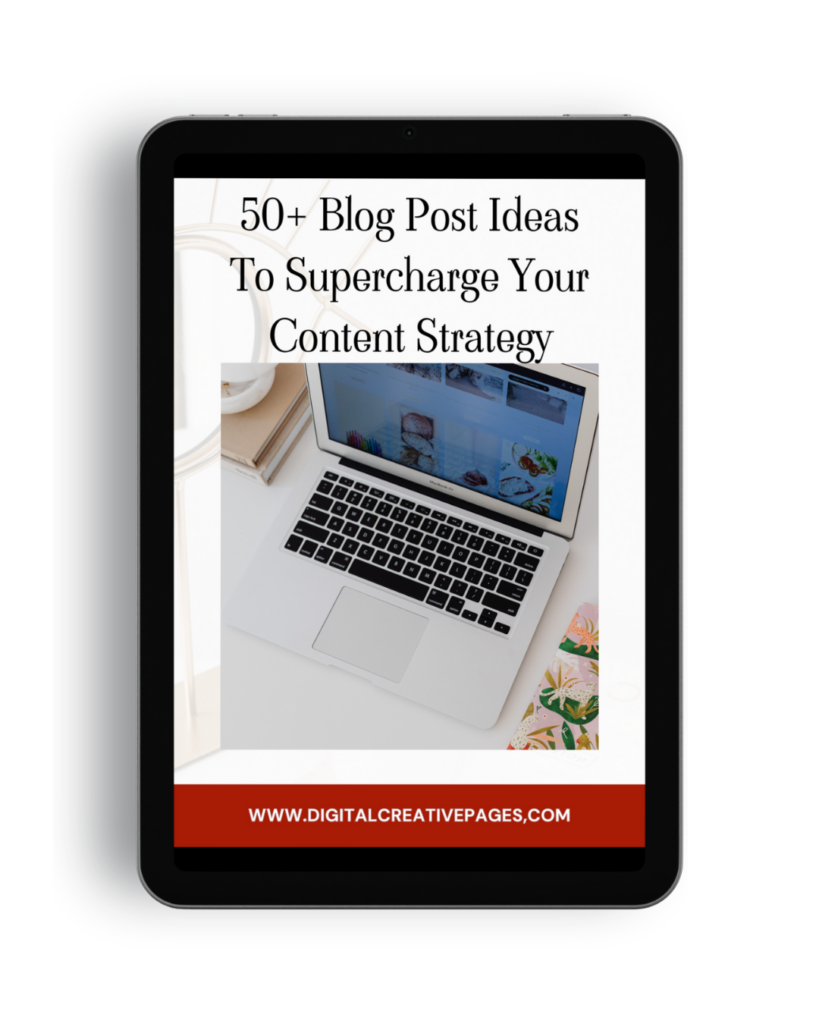
- Struggling to keep your blog fresh and engaging?
- Say goodbye to writer’s block with The Ultimate Blog Post Idea Generator!
- This comprehensive guide is your all-in-one solution to consistently creating content that your audience will love.
- Packed with 50 diverse blog post ideas tailored to various niches, a creative mind mapping exercise, and a practical content calendar template, this guide will help you stay inspired, organized, and on track.
- Whether you’re a seasoned blogger or just starting out, this eBook is designed to spark your creativity and ensure your blog never runs out of engaging content.
3. Create Content Clusters Around a Niche
If you only have a handful of blog posts, make them cohesive by focusing on a specific niche or topic cluster. This ensures all your boards and pins stay relevant to your audience.
Example: If your niche is home organization, create blog posts like:
- “5 Decluttering Hacks for Small Spaces”
- “The Ultimate Closet Organization Guide”
- “10 DIY Storage Solutions You Can Make Today”
When your content is connected, your Pinterest strategy feels more focused and impactful.
4. Batch-Create Blog Posts Before Launching on Pinterest
If you’re just starting out, aim to publish at least 5-10 blog posts before fully committing to Pinterest marketing. This gives you enough content to keep your boards active without overwhelming yourself.
Focus on a variety of content types, such as how-tos, listicles, and guides, to appeal to different audience preferences. Batch your content creation by writing multiple posts in one go, then staggering their publication.
5. Use FAQs to Generate More Blog Ideas
If you’re struggling to hit the 5-10 post mark, look at the common questions your audience asks in your niche.
- Search Pinterest’s search bar for popular long-tail keywords.
- Check forums, social media groups, or your blog comments for inspiration.
Answering these questions in your blog posts will not only attract Pinterest traffic but also position you as an expert in your niche.
6. Start Small But Build Momentum
If you’re overwhelmed by creating 10 posts upfront, start with 3-5 high-quality, keyword-rich posts and build from there.
- Use those initial posts as a testing ground to see what resonates with your Pinterest audience.
- Gradually add more blog posts based on what performs well and aligns with your niche.
7. Plan Pillar Posts Early On
Create at least one pillar post—a long, in-depth article that can serve as the cornerstone of your Pinterest strategy. Pillar posts often attract consistent traffic and offer endless pinning opportunities.
Example:
- A “Beginner’s Guide to Decluttering” can link to smaller posts like “Decluttering Kids’ Toys” or “5-Minute Decluttering Hacks.”
8. Prioritize Internal Linking from the Start And Cross Link Posts
Ensure all your blog posts link to each other, especially newer posts to older ones. This helps Pinterest users (and Google) explore more of your content.
Each blog post should have at least one other related post on your site. This increases engagement, keeps visitors on your site longer, and encourages them to pin multiple posts.
Example:
- If your niche is travel, link your “Ultimate Packing Checklist” to “Best Carry-On Bags for Travel.”
- A blog post on “5 Easy Weeknight Dinners” could link to “10 Healthy Meal Prep Ideas” or “The Best Kitchen Tools for Quick Meals.
9. Focus on Quality Over Quantity
While 5-10 posts are ideal to start, the quality of your content is far more important than the number.
- Avoid publishing rushed, low-value posts just to hit a number.
- A single, detailed, value-packed post can outperform multiple generic ones when paired with well-designed pins.
10. Test Blog Post Headlines for Pinterest Appeal
Your blog post headline directly affects how clickable your pin will be.
- Create SEO-rich headlines with action-oriented phrases like “How to,” “10 Best,” or “Ultimate Guide.”
- Test headlines by creating multiple pins with variations and tracking which perform best.
11. Offer Value in Every Blog Post
Pinterest users are looking for solutions, so ensure every blog post delivers actionable tips or insights.
- Add free printables, checklists, or templates that readers can download.
- Use engaging visuals, subheadings, and bullet points to make your content easy to read and digest.
12. Make Your Blog Posts Shareable Beyond Pinterest
To maximize your effort, include social sharing buttons on every blog post. While Pinterest is the focus, having other options like Facebook, Twitter, or email helps your content gain broader visibility
Final Thoughts
By following this strategy, you’ll be on the right track to building a Pinterest presence that not only attracts attention but also drives sales and business growth. Remember, it’s better to start small with quality content and a focused approach than to overwhelm yourself by doing too much at once. Keep testing, refining, and adjusting your strategy as you go, and Pinterest will become a powerful tool in your digital product sales journey.
Pin this for later
Loved This Post? Save It for Later!
And hey—if this post helped you, don’t forget to pin it to one of your boards so you can revisit it anytime. And more small business owners and creators can discover these helpful tips. Every save and share genuinely supports my work, and I’m grateful for it! Thank you!
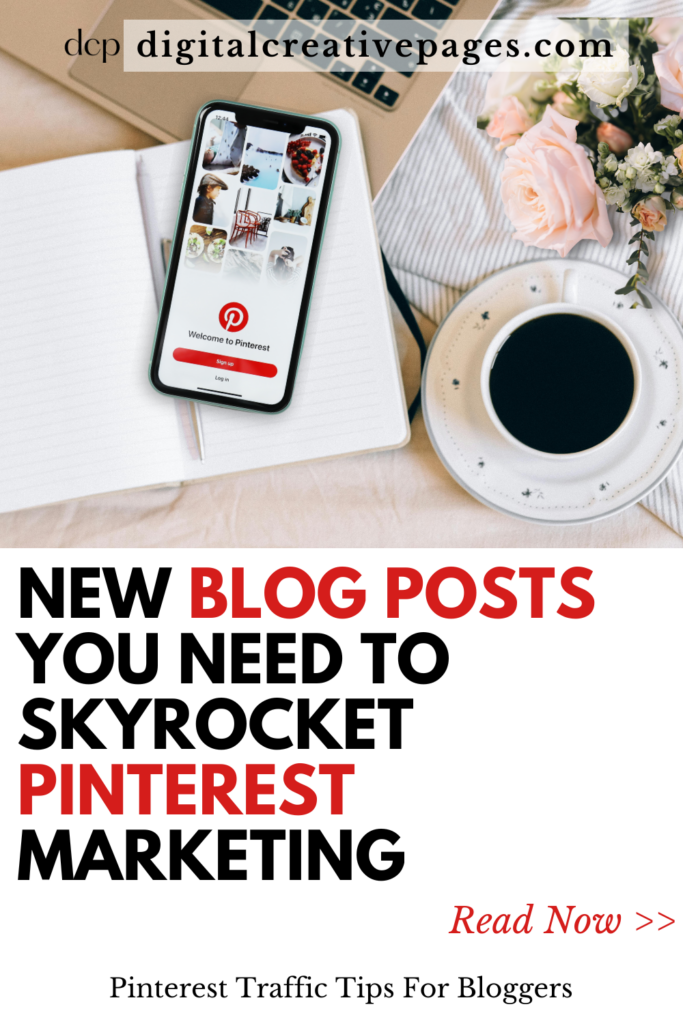
TEMPLATES FOR ENTREPRENEURS
No time to design from scratch? My Pinterest Templates are created with strategy, structure, and your brand in mind.
Pick your style: Modern Minimalist | Soft Storytelling | Entrepreneur-Friendly Layouts
For the cost of a latte, get them here → DCP Shop → $5
MY TOP POSTS
My INTRODUCER post – check out why I chose Showit as my website builder here
Use my code DCP to get one 1.5 months free on Showit
Get all the resources for your online business growth and Pinterest marketing without breaking the bank from my DCP Shop here
FB
X
Pin
Share
By signing up for my freebies, you are agreeing that I can use your email address to market to you. You can unsubscribe from marketing emails at any time by using the link in my emails.
Leave a Reply Cancel reply
Previous Story
next Story
sound like we're a match?
Now I empower women to follow their dreams and make money from home with digital products via social media, mainly Instagram and Pinterest.
I'm a beta reader & editor, who is also a PA to a couple of authors slash best friends.
Hey friend!
Join the membership
For Stock Pics
Styled stock society
Stock photos and brand visuals for women entrepreneurs who are ready to stand out.
Styled Stock Society — with its on-brand and one-of-a-kind stock photos, graphic templates, marketing materials, and more — is designed to elevate your brand in less time.
#affiliatelink
For the Business
showit
Get the 1st month free using the code DCP.
Discover the ultimate platform for effortless page customization! Create or update your site without coding knowledge or hiring a developer. This drag-and-drop tool is user-friendly, versatile, and beautifully designed.
visit site
My for your business
favorite tools
Let's explore it together
Come with me
visit site
flodesk
Free 30-day trial + 50% off!
Elevate your email marketing with Flodesk, a company that simplifies email list growth and streamlines creation. Create stunning emails quickly and effortlessly—join Flodesk now!
DOWNLOAD
Free Guide
FREEBIE FREEBIE FREEBIE
Get the free guide download by over 2,000 people!
Digital Content Pages
subscribe to my newsletter
SIGN ME UP
I only send helpful content and valuable freebies. You can unsubscribe anytime.
Imagine this: You're enjoying your morning routine, cup of coffee in hand, when a fresh set of actionable business and social media marketing insights lands in your inbox.
No overwhelming tactics or pushy sales talk—just thoughtful, sustainable strategies to help your business thrive.
Want to join a growing community of bloggers, business owners, and social media enthusiasts? Sign up for the Digital Content Pages Newsletter and get weekly bite-sized tips and free resources delivered directly to your inbox.
You'll be added to my newsletter
Thanks
© Copyright 2024 - 2025 Digital Creative Pages Business Mentor + Beta Reader + Book Editor
Get my free set of 5 pins download by over 100 people!
Quick + Easy Ways to Start Making Pins
Join Me on Insta
